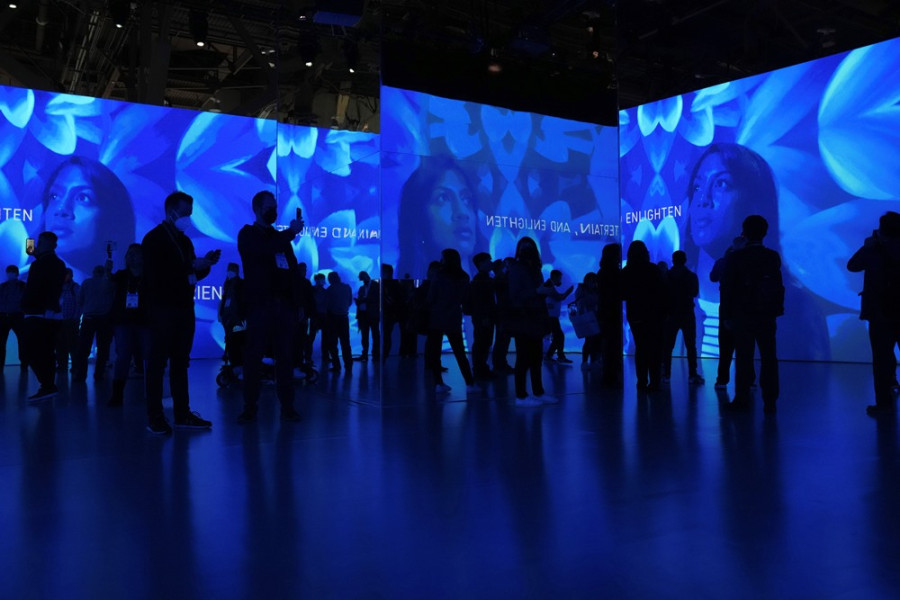Science & Technology
2022’s vision for consumer tech
The Consumer Electronics Show (CES) kicks off the year with important updates and announcements from technology companies every year.
Prajesh SJB Rana
Foldables, Apple in-house chips, and AMD’s powerful processors are only some of the significant consumer tech advancements we saw last year. Following up on last year's advancements, 2022 seems to be gearing up to be an equally influential year in consumer tech. The Consumer Electronics Show (CES) kicks off the year with important updates and announcements from technology companies every year. While some of the ‘concepts’ showcased turn out to be vapourware, many find their way into consumers’ hands. At CES 2022, we see some bizarre, experimental tech that might take years to come into fruition but are cool and exciting nonetheless.
CES 2022 was scheduled to happen in-person at Las Vegas this year, but due to the growing Covid-19 concern, many attendees decided to sit it out, while many exhibitions and keynote speakers chose to drop their participation as well. Despite these concerns, the show took place and showcased some exciting tech that might dictate the course of consumer tech in the years to come.
One of the major updates we see this year is in television technology with Sony announcing their Q-OLED (Quantum Dot) TVs, a new OLED technology that flaunts higher contrast rates to older OLED panels. Samsung also showed off a prototype of the same technology, calling it QD OLED. Compared to traditional OLED, where light from LED nodes has to pass through a filter, the new QD OLED does without this filter layer. Individual LED nodes on a QD panel can produce RGB colours independently, resulting in minimal loss of luminance, which means a way brighter image with impressive contrast. While Quantum Dot OLED displays are by far the most impressive, television companies also advertised mini-LED, micro-LED, Neo QLED, and OLED EX, all technology that works on the basics of an LED display panel but with various upgrades and tweaks to make them look better.
On the computer side of things, Dell’s XPS 13 Plus comes with an exciting new design to the already popular XPS line. While retaining the brilliant Infinity Edge display, the new design comes with a new lattice-free edge-to-edge keyboard, a touch-bar-like haptic function row above it, and an invisible touchpad. Initially, when I saw the design, I thought Dell has managed to make the touchpad redundant by turning the whole palm rest into an on-demand touchpad—like a more exaggerated version of the huge touchpads on the Mac—but it turns out that the touchpad is only invisible and not seamless, which seems a little less practical since you have to feel around for where the trackpad begins or ends. It looks cool and futuristic, though.
Lenovo also showcased their Lenovo ThinkBook Plus Gen 3, a notebook with an 8-inch secondary screen next to the keyboard. Asus has announced a foldable 17-inch laptop. While the two aforementioned laptops might be too out-there when you think about their practicalities, the Lenovo ThinkPad Z Series is a practical laptop that is geared to consumers rather than businesses, a niche the ThinkPad series catered to in the past.
For technologies that power these devices, Intel is announcing their new 12th Gen Alder Lake CPUs for release later this year. Intel hasn’t had the best couple of years since Apple pulled back from Intel by engineering their in-house chips while AMD dominated the consumer CPU market with their high-performing Ryzen chips. Intel assures us that their newer chips are going to be around 49 percent faster than the AMD chips while even trumping Apple’s M1 Max chips. Even if they don’t, Intel is still the juggernaut when it comes to consumer chips, so they’re going to be powering your 2022 computers anyway. AMD has also announced some additions to their lineup with their Ryzen 7000 desktop chips built on a 5nm process and their mobile Ryzen 6000 chips for laptops. On the other hand, Nvidia has introduced their new ‘Ti’ versions of the RTX 3000 series from RTX 3060, 3070, and 3080 receiving a superpowered Ti variant. There is even a 3090 TI variant with 24 GB of GDDR6x of VRAM; how affordable and accessible these will be is another question altogether.
The show also played host to a lot of bizarre techs. TP-Link showcased a tri-band Wifi 6 router, the AXE200 Omni, with moveable antennas that automatically follow a device as it moves around in the physical world. Paying homage to soon-to-be robot overlords, Engineered Arts showcased their human-like Ameca robot with an expressive face and mobility playing further into the uncanny valley. Samsung also announced their Eco Remotes that harvests wasted radio waves from your router or smart home devices to charge themselves.
Sustainability has been a huge part of CES this year, and we’ve seen one of the biggest names in consumer tires, Goodyear, design a tire made up of 70 percent sustainable materials that include carbon black produced through methane, carbon dioxide, and plant-based oil. Even Lenovo’s Z series has been designed with sustainability in mind. The laptop comes with a charger made of 90 percent recyclable material, and even the device itself can be bought with recycled aluminium or vegan leather.
We also saw a lot of sustainable electric cars at CES this year too with Mercedes showcasing their EQXX electric car that looks amazing and flaunts a 600+ miles range on it. It looks beautiful, too, but it is at a very early concept stage at this point. BMW showcased their colour-changing car that goes from black to white using eInk technology, but colours could be expanded up to 12 colours in the future. Sony also announced that they’d be working on building cars with their new Sony Mobility Inc and unveiled their Vision-S concept.
CES 2022 brings a lot of cool, exciting, and new technology to the sphere. Although there is a high chance that most of the farfetched ones will remain in production limbo or will only be entirely practical further into the future, many seem very feasible. They should be available to consumers sometime in 2022.




 6.93°C Kathmandu
6.93°C Kathmandu










